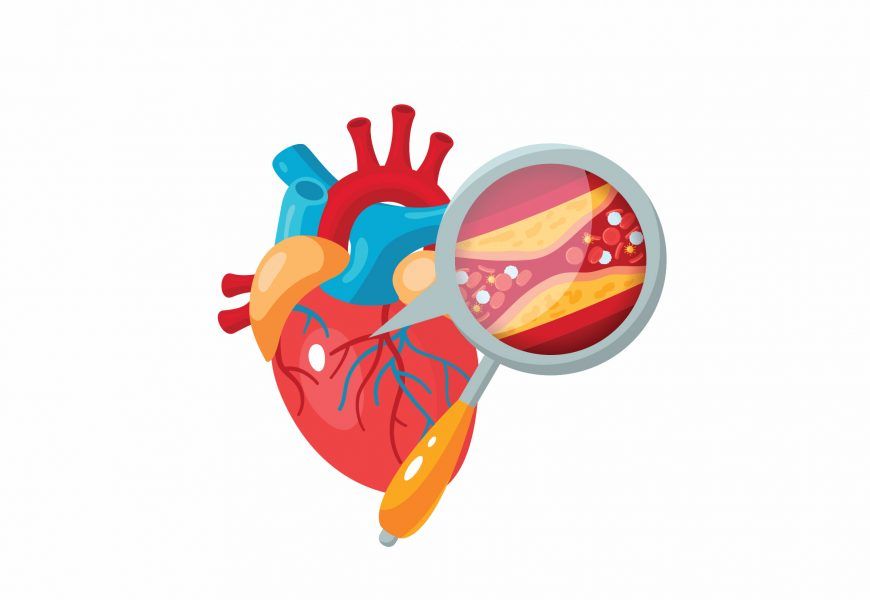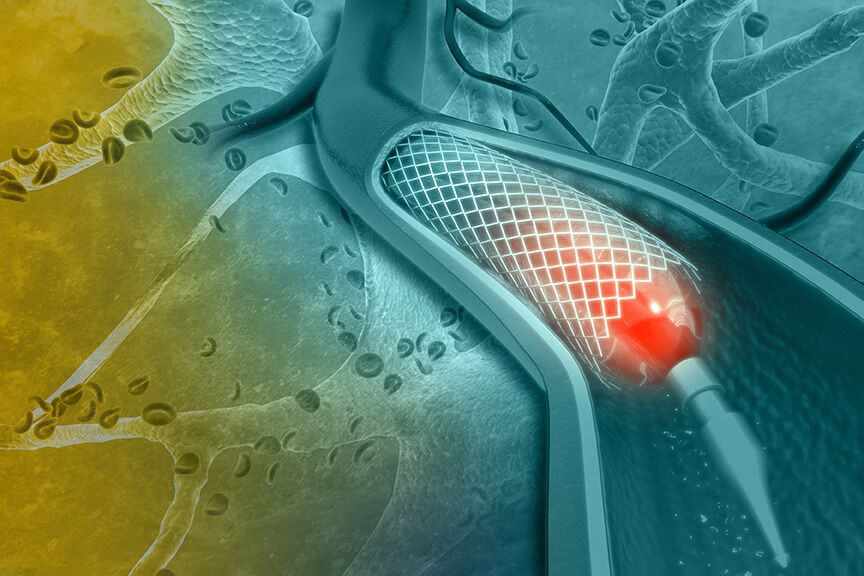Introduction to angioplasty
Arteries in the heart could become narrow or get blocked by gathering of fat and cholesterol, referred together as plaque. Plaque develops on the inner lining of the arterial walls, leading to hardening of arteries. This is known as coronary artery disease (CAD). Angioplasty is a procedure used to remove blockages in heart's arteries that have formed as a result of CAD. Angioplasty is also referred to as “Percutaneous Transluminal Coronary Angioplasty” or “Percutaneous Coronary Intervention” or even “Balloon Angioplasty” of coronary artery.
arteries of the heart, arteries of the peripheral blood vessel system also get affected by plaque formation and hardening. It is referred as peripheral artery disease. Your doctor may recommend you to undergo balloon angioplasty for treating these peripheral arteries as well to open the narrowed or blocked peripheral arteries of the lower limbs, kidneys, abdomen or arms.
Is Angioplasty the same as Stent Implantation?
In a nutshell, angioplasty refers to a procedure which utilizes a balloon-tipped small tube called a catheter to open a blocked or narrowed artery and normalizes the restricted blood flow. The balloon at the tip of the catheter is inflated in order to radially displace the plaque and restore the blood flow. Angioplasty may be performed with or without stent placement.
A stent is a small mesh, tube-like structure that gets expanded in the coronary artery lumen. It’s use will be determined by the doctor based on clinical need. When deployed at the blockage site during the angioplasty, it helps to ensure long term patency of the artery lumen.

When do you require a coronary angioplasty?
In case you are diagnosed with blockages in the arteries of your heart or peripheral organs and if you are facing severe discomfort and pain in your chest or any peripheral parts, or if in your doctor's opinion, these blockages are increasing risk of a heart attack in your case, you may require angioplasty.
How do you prepare for an angioplasty procedure?
Your preparation before an angioplasty procedure may involve monitoring tests like an ECG, X-rays and some routine blood tests. You will be briefed about the risks and benefits of the procedure. You should take several precautions before your procedure, such as:
Ensure that your doctor is aware of all the medications you are presently consuming for any of other diseases such as diabetes, hypertension, etc.
You should also inform your doctor if you are allergic to any metals, drugs, X-ray contrast dyes or iodine. These allergies may need particular medications before the commencement of the procedure.
It is also vital to inform your doctor, if you cannot take blood thinners.
You will possibly be advised not to eat or drink anything six to eight hours before the procedure.
Additionally, if you have not already quit smoking, your doctor may recommend that you quit smoking before your hospital admission.
Immediately before the procedure, you will be asked to remove any dentures, glasses or jewelry.
You will be advised to empty your bowels and bladder to ensure your comfort and an uninterrupted procedure.

How is a coronary angioplasty carried out?
Majority of angioplasty procedures last for a duration of anywhere between 30 minutes to three hours. Once you are admitted in the hospital for an angioplasty, your heart will be continuously monitored.
The doctor will numb an area in your abdomen or arm and then insert a catheter (small tube) into a blood vessel (artery) in the numbed region. You will be given an intravenous sedative (medicines that make you fall asleep) or a local anesthetic (numbing agent) for this purpose.
There are two common routes used by the doctor to access the arteries of the heart. One is the femoral artery in your groin and the other is the radial artery in your arm. Both the access routes are known to be safe and are equally effective in majority of patients. However just like in most other procedures, the best access route is mainly dependent on the patient’s individual medical condition. Once an access site has been decided on, a needle puncture will be made.
A guiding wire will then be passed through the needle and threaded through the vascular system to reach your heart.
The catheter with a balloon at its tip is then guided through the blood vessel into the coronary artery via the previously inserted guidewire. The entire procedure is monitored through an imaging tool called as fluoroscope.
When the apparatus reaches the coronary blood vessel, the guidewire is removed and a special dye is injected in order to visualize the entire artery in the form of an X-ray image and to aid in locating the exact position of the blockage in the artery. This imaging is termed as an “Coronary Angiogram” or simply “Angiogram”.
As soon as the block is identified, another flexible guidewire is introduced in the artery followed by the balloon tip catheter to reach the exact location of the blockage.
Rapid expansion and contraction of the balloon at the tip of catheter is carried out after its positioning exactly over the blocked area in the vessel. This mechanism will push the accumulated plaque radially against the walls of the artery, opening the narrowed space of the lumen.
Once the blood flow is restored, the balloon is deflated and is taken out from the vessel system.
The procedure of balloon angioplasty for treating PAD is the similar to coronary angioplasty except for the procedure site being at the peripheral artery concerned.
What are the precautions a person should take after angioplasty?
- Immediately after an Angioplasty: 1) In case your catheter was inserted through the artery in your groin, you will be needed to lie straight, during the whole period of the groin sheath being in place. 2) A sheet might also be kept across your leg along with the sheath to remind you to keep them straight. 3) After sheath removal, you will be needed to stay lying in flat position for about 6 hours for preventing hemorrhage. However, your paramedic staff can get your head elevated to a certain height after a couple of hours. Your nurse will advise you regarding when you could get out of the bed. 4) You may be asked to consume only clear liquids until the groin sheath is taken. Once you regain capacity to eat, prefer only heart-healthy diet. 5) If your catheter was inserted through the arm, your doctor will place a specialized bandage to ensure proper healing. 6) Inform your doctor immediately, if you experience chest pain, swelling or pain at the insertion site or bleeding. 7) In case of stent placement after angioplasty procedure, you will be required to take certain medicines to reduce the chances of blood clot formation.
- Precautions during Recovery: 1) In case you did not get a heart attack prior to your procedure, you can restart driving even after just 2 days. If you had a heart attack, you need to first get a green signal from your doctor. 2) Avoid lifting heavy objects (more than five kg) preferably until 1 week after procedure. 3) Performing regular exercises will aid to speed up your recovery and even after complete recovery, regular physical activity is good for heart health when combined with a heart healthy diet.
- General Precautions: Gradually resume your routine activities. Remember, angioplasty won't cure your disease. You still require to follow your diet and activity recommendations to prevent re-blocking of arteries. You should prefer a diet which mainly consists of fruits, vegetables, whole grains, nuts, etc. as they can decrease heart disease risk. Reduce your salt consumption as well as sugar intake. You need to regularly take your prescribed medicines such as blood-thinners, lipid-lowering medicines such as statins or anti-hypertensives as recommended by your doctor, depending on your condition.
Risks involved with an angioplasty procedure
Though being a minimally invasive procedure as compared to open heart surgery, angioplasty still is associated with some risks. The most frequently encountered risks of angioplasty include:
Re-narrowing of blood vessels (arteries)
Formation of blood clots at other locations of the same artery
Bleeding at the catheter insertion site
Some rare possibilities might also include:
Heart attack/stroke during the procedure
Injury to the operated artery
Renal problems resulting from the dyes used during the procedure. However, this possibility is especially seen in patients with prior kidney troubles.
Abnormal heart rhythm. These problems normally last for brief durations. However, on extremely rare occasions, patients might require drug therapy or temporary pacemaker implantation.
